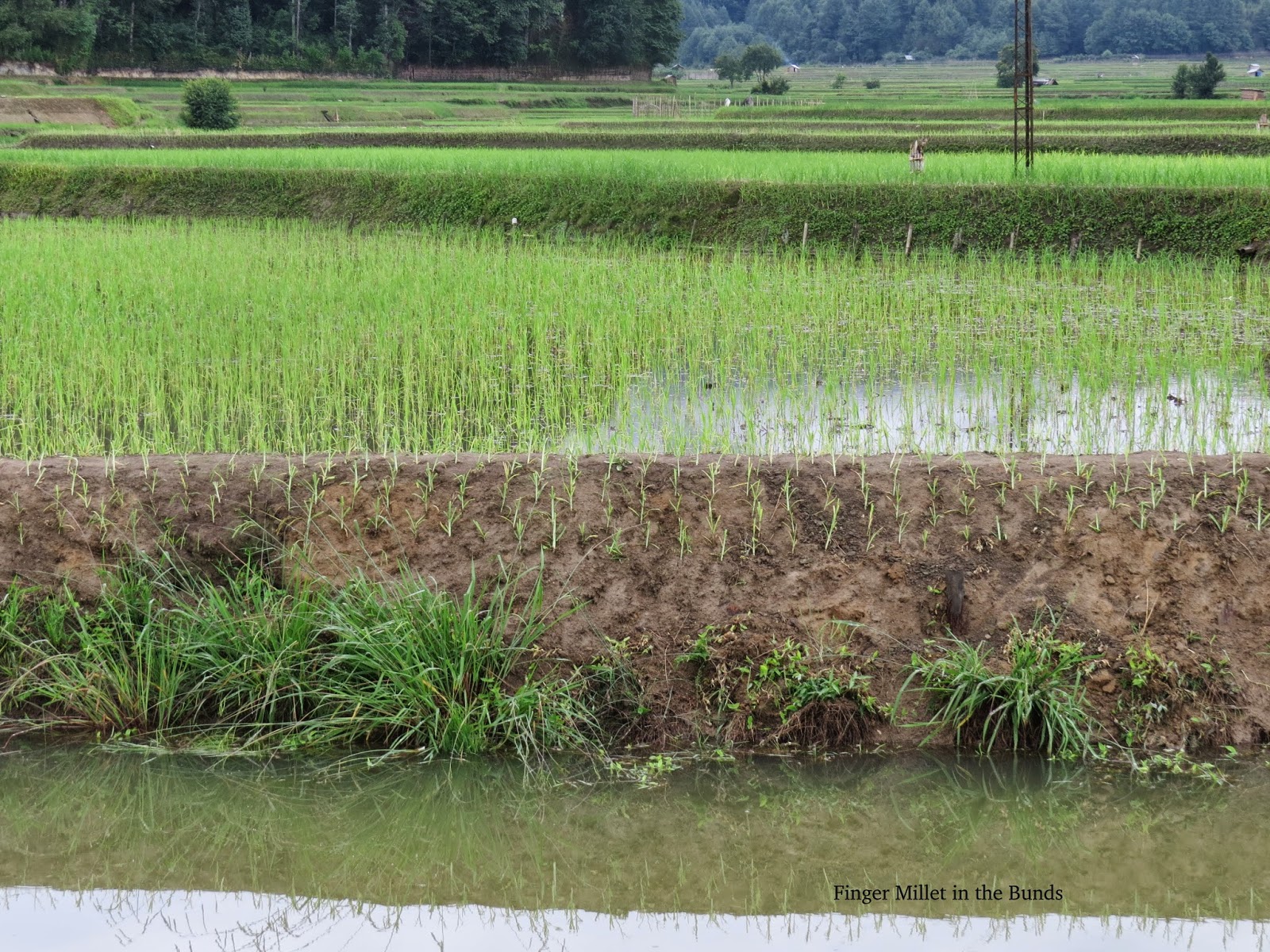Hari Village
With an Apatani Woman
Channel
Hari village
Rice in Terraces at Hari Village
Finger Millets on the Bunds
Irrigation Channel
Inlet and Outlet
With an Apatani Woman
Channel
Hari village
Rice in Terraces at Hari Village
Finger Millets on the Bunds
Irrigation Channel
Inlet and Outlet
Apatani valley or Ziro valley of Arunachal Pardesh is famous for organic (by default) folk rice cum fish cultivation. It is presumed that they hailed from China in 7th century during the spread of Buddhism. Arunachal Pradesh is a home of more than 20 Mongoloid tribal groups being the Adi, Apatani, Nyishi, Mising, Monpas etc. Apatanis have developed a special type of rice cum fish cultivation in their terraces during the months of May to October. After the harvest the rice the land is kept fallow.All the domestic animals start grazing at that time. Transplanting of rice is completed in the last week of May. It seems that that the area is not affected by global warming and low rain fall.There is no dearth of water and the the soil is very rich in nutrients as the forest wash comes to the field, hardly requires any external material as an organic matter.There are 20 non glutinous folk rice varieties are in vogue and some of them are going to be lost having short duration.
There was a proposal for declaring the place as as World Heritage Site.But the people are not very aware of it and the land is being squeezed due to rapid unplanned development. There are approximately 15000 people are living over there and in Hari village has the population of 2000 with 418 families. Hari village has the famous Apatani rice cultivation.
The varieties are : OWNED varieties -EMO,ERE EMO , EIANG EMO, RADHE EMO, EMPU EMO. EMPU ERE, EMPU HATH
Own less round varieties:- PYAPIANG, PYAPIANG PIYANNI,JI PYAPIANG, MITU PYAPIANG, TIIPE PYAPIANG, OH PYAPIANG,
MIPYA PYANYI, MIPYA PYARE, UTU ANYI, APA ANY ( As told by Mr Duyu Tadu, Agril Development Officer, Farmers' Training Cell, O/O the District Agricultural Officer, Ziro)
They manage the irrigation channels with inlet and out lets in a very scientific manner. Each farmer does it as if they are manging the water on community basis.
They receive the nutrient and microbe rich and forest wash from the forest and it gives the proper food for the soil.The cultivation is on the terraces and water comes to low lying steps automatically.
But the detailed data of the rice cultivation needs to be updated.Seedlings are not shown in line. But they are more interested in fish and the total out put is much higher than the mono crop of rice.
pradesh
http://www.agriculturesnetwork.org/magazines/india/1-farming-diversity/traditional-wisdom-of-apatanis-2013-a-way-to/at_download/article_pdf









.JPG)












